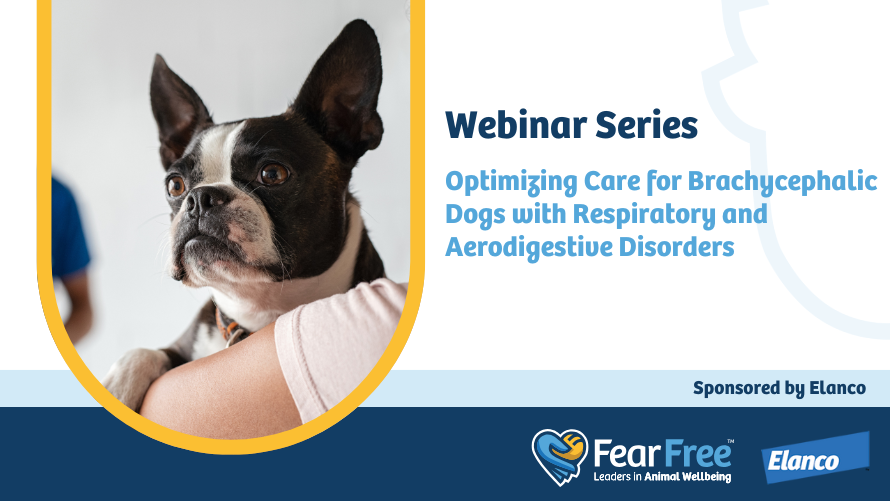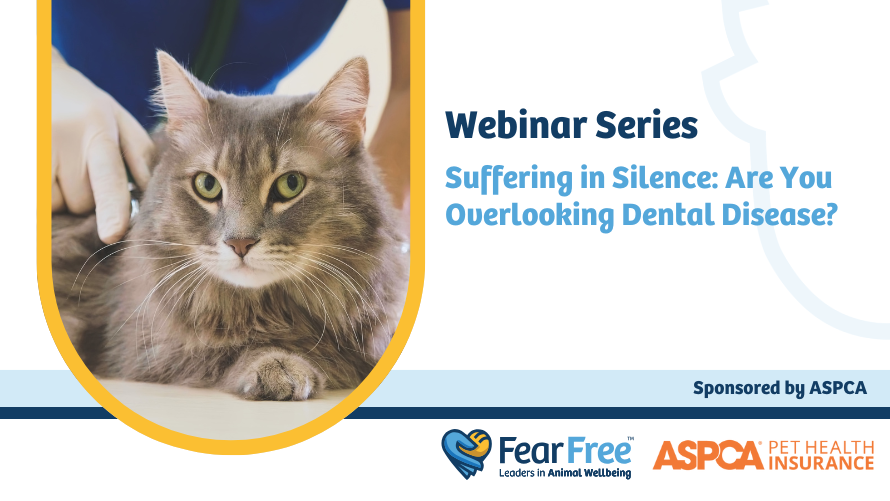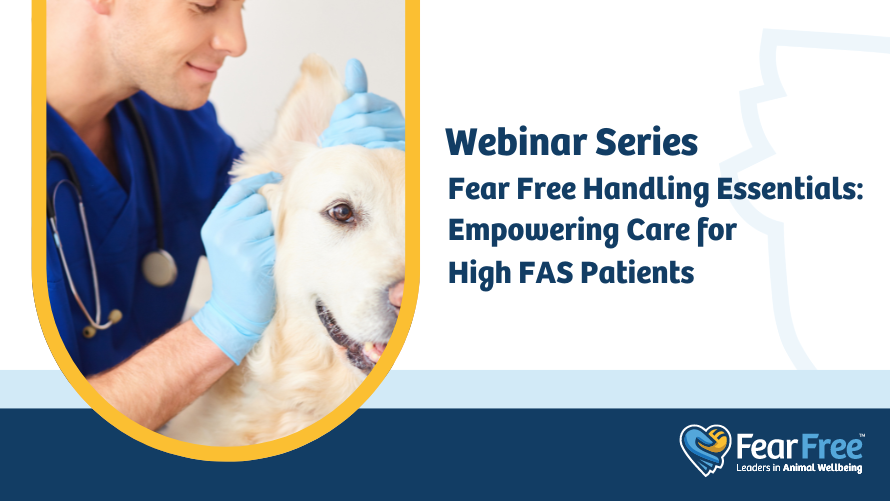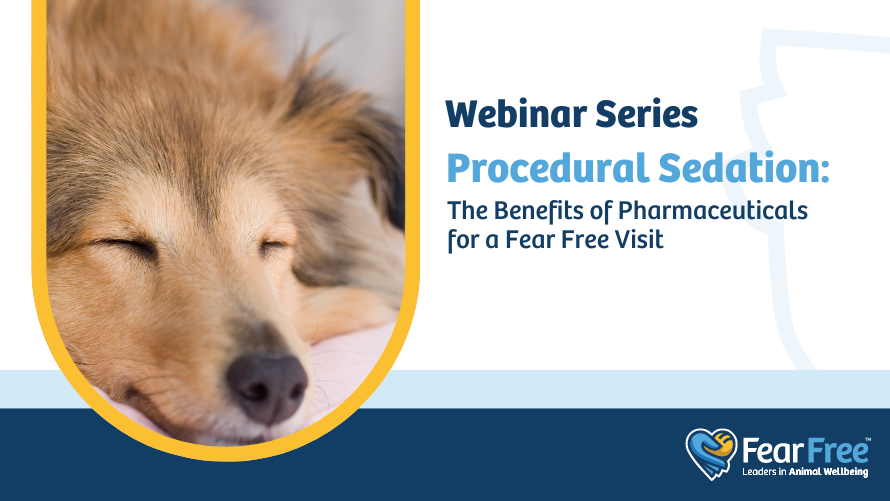Blog Archives

This is Part Three of a three-part series on effective parasite prevention and preserving the human-animal bond through the entire process.
Parasite infestations are more than a gross nuisance. In addition to increasing the risk of vector-borne diseases for pets and pet parents, the complications that come with fleas and ticks can potentially compromise the human-animal bond, significantly impacting the emotional wellbeing of both pets and owners.
Client education and empowerment can shine a much-needed light on this rising concern and ensure pet parents and their pets enjoy uninterrupted comfort, health, and companionship.
The emotional toll of parasite infestations
Flea and tick infestations can disrupt daily life and create significant fear and stress for pets and their owners. While health-related concerns such as vector-borne disease transmission, allergic reactions (such as flea allergy dermatitis), and pet discomfort are the priority, negative impacts on the pet and pet parent’s emotional wellbeing must also be considered and addressed. These include:
- Behavior changes — Affected pets may be more irritable and restless or seek isolation. Such uncharacteristic changes can be frightening for the pet and stressful for the owner, especially when the underlying cause goes undiagnosed.
- Altered routines — After an infestation is discovered, pet treatment and environmental eradication measures can disrupt the household routine.
- Physical distance between pet and owner — Owners may change how they interact with their pet, including new sleeping arrangements or avoiding close contact. This can create apprehension and uncertainty for pets and decrease the sense of comfort and security previously provided by the human-animal bond.
- Guilt and worry over the pet’s condition — Parasite infestations can cause pet parents to feel shame and guilt over their pet’s condition. Watching the pet struggle with discomfort or associated disease can lead to pronounced worry and fear, which can heighten the pet’s already stressful state.
Knowledge gap: Pet parents and parasiticide awareness
Despite the availability of numerous safe and effective parasiticide products, many pet parents remain unaware of how easy it is to protect their pets from flea and tick infestations and related diseases. To help pets and owners avoid unnecessary suffering, veterinary teams should address common knowledge gaps, such as:
- Risk — Pet parents may not understand that a clean home or indoor-only living arrangement doesn’t preclude their pet from parasitic infestation. They also may not realize that it takes only one flea or tick to cause suffering, illness, infestation, or zoonotic risk.
- Prevention—Pet parents may not know that year-round preventives don’t merely keep fleas and ticks away; they can also prevent harmful disease transmission from fleas and ticks.
- Product efficacy and safety — Pet parents may not understand the significant differences between over-the-counter, “all-natural,” and prescription-only products. Educating pet parents on the value, safety, and quality of research-backed and FDA-approved products, including how they work and proper administration techniques, can ensure greater protection, health, and peace of mind.
Client education and creating a Fear Free experience
Educating the pet parent can alleviate parasite-related fears by raising awareness about parasitic diseases and prevention. By building trust and confidence, pet parents can take a more proactive role in their pet’s care, knowing how to identify, address, and prevent fleas and ticks. The veterinary team can further empower pet parents and drive parasiticide compliance by promoting a Fear Free approach to parasite prevention. This includes:
- Determining product preferences — Matching the right preventive type to each patient and client can increase compliance by decreasing administration-related stress. For example, pets who are fearful about topical applications and associated handling and restraint may readily accept a chewable tablet.
- Understanding product administration and use — Talking clients through the process and letting them see the preventive and how it is administered can increase confidence and comfort when they handle the product themselves.
- Creating positive associations with parasite prevention tasks — Parasite-related pet care tasks such as medicating the pet, checking for fleas and ticks, and removing parasites from the skin or coat can trigger fear and anxiety and create barriers to compliance. Coach pet parents on how to pair these tasks with something the pet loves, such as a special treat, toy, or experience, through classical conditioning. Remind them that repetition and consistency are key to ensuring better cooperation and a positive, lifelong result.
Despite their tiny stature, fleas and ticks can have an enormous impact on the physical and emotional health of pets and owners, including the all-important human-animal bond. Comprehensive protection begins with effective client education and empowerment. This ensures that pet parents not only understand the need for appropriate preventive actions but know how to provide them in a way that strengthens their pet’s defenses as well as their shared love and trust.
PM-US-24-1348
This article was reviewed/edited by board-certified veterinary behaviorist Dr. Kenneth Martin and/or veterinary technician specialist in behavior Debbie Martin, LVT.
Continue learning through Part One & Part Two of this series.
Want to learn more about Fear Free? Sign up for our newsletter to stay in the loop on upcoming events, specials, courses, and more by clicking here.

This is Part Two of a three-part series on effective parasite prevention and preserving the human-animal bond through the entire process.
The prevalence of tick-borne diseases is increasing across the United States, endangering canine and human health and the dog-owner bond. While year-round use of tick protection products, diligent visual checks, and environmental management can reduce tick exposure, these methods may still leave pets and people vulnerable to tick attachment, disease transmission, and associated stress and anxiety.
Although isoxazoline-based products are generally considered effective against ticks, a head-to-head study revealed significant differences in two critical categories: speed of tick* kill and duration of efficacy.1 Understanding the differences, and why they matter, may help reduce tick-borne disease transmission in dogs while preserving the closeness of the human-animal bond.
Understanding isoxazolines
Four isoxazolines are currently approved to treat and control ticks in dogs, including lotilaner, afoxolaner, and sarolaner.1 Isoxazolines work by selectively binding to the calcium channels in muscles and nerves, blocking the transmission of neuronal signals, and causing tick paralysis and death. 2
Tough target: Tick* species
While multiple tick species carry concerning pathogens, the lone star tick is considered more difficult to kill because of its reduced sensitivity to isoxazoline treatment, making it an ideal subject for the comparison study.3
Speed matters: Speed of kill and disease transmission
Disease transmission time frames vary by pathogen and are influenced by a variety of factors, but may begin as early as 3 to 24 hours after tick attachment, emphasizing the necessity for a rapid speed of tick kill.4,5 In the study, 32 participant dogs were infested with 50 lone star ticks, which were allowed to attach and feed.1 At 48 hours after tick* application, dog groups were treated with either lotilaner, afoxolaner, or sarolaner.1 The control group received no
treatment.1 Credelio® (lotilaner) demonstrated the fastest speed of tick* kill among all three products and was twice as fast as the two competitive products.1
Duration of effect
Credelio also demonstrated a consistent and sustained effect, providing an initial significant reduction in live ticks* compared to the untreated control group at every 12-hour evaluation.1 At every 24-hour evaluation, only the Credelio-treated group achieved ≥90% efficacy. Credelio was also shown to have a longer half-life than its competitors, providing consistently high efficacy and a rapid speed of kill throughout the 30-day period to ensure protection against ticks* and tick* reinfestation.1
Impact for pet parents
Credelio’s fast, reliable, and effective tick control can provide far-reaching benefits for pets and owners alike, protecting the pet’s health and preserving the human-animal bond. Advantages include:
Reducing pathogen transmission — Rapid speed of kill may lessen the likelihood of tick-borne disease by eliminating ticks before they can feed, aiding in a better quality of life for the dog.
Controlling infestation-related discomfort and stress — Whether two ticks or two hundred, tick infestations create discomfort and anxiety for dogs and owners. Recognizing and reactively addressing a tick infestation requires thorough grooming, cleaning, treatment, and close observation, all of which can heighten stress for pets and create emotional or physical distance between a dog and their owner.
Providing peace of mind — Pet parents can feel confident that their dog’s effective tick control can provide comprehensive protection against ticks they may have overlooked while checking their pet. Additionally, because many tick-borne diseases present with subtle or intermittent changes, owners don’t have to fear that they are missing their pet’s early warning signs.
Promoting convenient, comfortable administration — Medicating pets is a common cause of fear, anxiety, and stress in dogs and their owners. The chewable formulation of Credelio (lotilaner) could potentially help minimize medication-related stress by making the process a mutually positive and rewarding experience.
Providing steady coverage — Consistent efficacy throughout the treatment period can provide greater peace of mind if clients forget to give their dog’s dose on time.
In the battle against tick-borne diseases, speed of tick kill and duration of effect play a critical role in providing steady protection and enhanced peace of mind. Credelio demonstrates key features that stop the clock on ticks* and their impact on the pet-owner bond.
*Lone Star Tick (Amblyomma americanum)
Sources:
- Elanco Animal Health. Data on file.
- Ramesh C., et al; Isoxazoline Toxicosis in Animals – Isoxazoline Toxicosis in Animals (2002). Merck Veterinary Manual.
- McTier, T. L., et al (2016). Determination of the effective dose of a novel oral formulation of sarolaner (Simparica™) for the treatment and month-long control of fleas and ticks on dogs. Veterinary Parasitology, 222, 12–17.
- Fernández-Ruiz, N., et al (2023). Passive collection of ticks in New Hampshire reveals species-specific patterns of distribution and activity. Journal of Medical Entomology, 60(3), 575–589.
- Kidd L., Breitschwerdt E.B (2003). Transmission times and prevention of tick-borne diseases in dogs. Compendium on Continuing Education for the Practicing Veterinarian, 25(10), 742-751.
CREDELIO INDICATIONS
Credelio kills adult fleas and is indicated for the treatment and prevention of flea infestations (Ctenocephalides felis) and the treatment and control of tick infestations [Amblyomma americanum (lone star tick), Dermacentor variabilis (American dog tick), Ixodes scapularis (black-legged tick) and Rhipicephalus sanguineus (brown dog tick)] for one month in dogs and puppies 8 weeks of age and older and weighing 4.4 pounds or greater.
CREDELIO IMPORTANT SAFETY INFORMATION
Lotilaner is a member of the isoxazoline class. This class has been associated with neurologic adverse reactions including tremors, ataxia, and seizures. Seizures have been reported in dogs receiving this class of drugs, even in dogs without a history of seizures. Use with caution in dogs with a history of seizures or neurologic disorders. The safe use of Credelio in breeding, pregnant or lactating dogs has not been evaluated. The most frequently reported adverse reactions are weight loss, elevated blood urea nitrogen, polyuria, and diarrhea. For full prescribing information see Credelio package insert.
Credelio, Elanco, and the diagonal bar logo are trademarks of Elanco or its affiliates. Other company and product names are trademarks of their respective owners.
©2024 Elanco or its affiliates. PM-US-24-1345
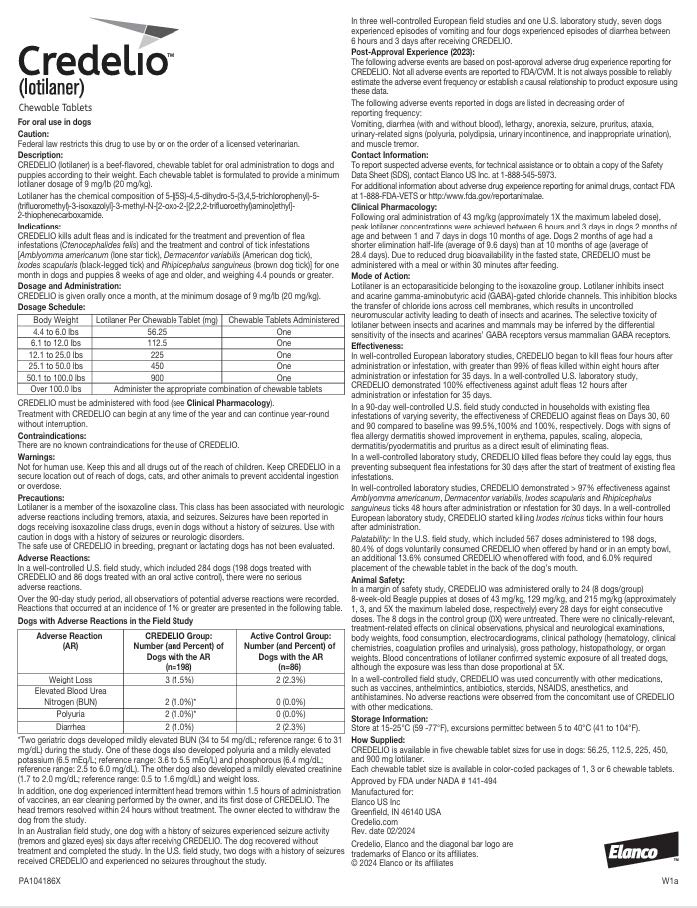
This article was reviewed/edited by board-certified veterinary behaviorist Dr. Kenneth Martin and/or veterinary technician specialist in behavior Debbie Martin, LVT.
Continue learning through Part One & Part Three of this series.
Want to learn more about Fear Free? Sign up for our newsletter to stay in the loop on upcoming events, specials, courses, and more by clicking here.

Understanding how our pets sense the world allows us to proactively address external stimuli to promote a more positive experience.

The relationship between clients and their dogs has deepened as more people integrate their pets into daily routines, sharing everything from the food on their plates to the places they sleep. While this close harmony strengthens the mutual benefits of the human-animal bond, it also increases the chance of sharing unwanted parasites.
Ensure nothing—including fleas, ticks, and their associated diseases—can come between your clients and their canine companions with effective parasite education and prevention.
Making room for Fido: Is letting your dog sleep with you OK?
Before we explore the unseemly world of parasites, let’s pull back the covers on canine sleeping arrangements.
According to veterinary behaviorist Dr. Meghan Herron, DVM, DACVB, FFCP-V, sharing the bed with a dog is acceptable and, in some cases, advantageous for the dog or pet parent. “More and more people want that comfort and affection,” Herron said. “Having a canine companion [share your bed] can be helpful.” However, the dog’s and their owner’s comfort should be a priority. “Not every dog is going to enjoy sharing the bed,” said Herron, citing the need for undisturbed sleep or cooler temperatures as common reasons why. “Some dogs do great in a crate or sprawled out on a hardwood floor.”
While some owners worry that treating their dogs like humans (i.e., anthropomorphism) may lead to a sense of dominance or behavior problems, Herron says this is not the case, adding “there is no known correlation between these interactions and behavior issues.”
When sharing isn’t caring: Health risks
Physical closeness is an everyday way for people and dogs to grow their relationships, but without proper precautions, it can also increase their risk for certain health hazards. Fleas and ticks can easily move from dogs to humans, often unbeknownst to us as we sleep or rest. While ticks are less nimble than fleas—who can jump two feet high and 40 to 100 times their body length—unattached ticks can easily migrate from dog to owner.
In addition to causing painful bites, fleas and ticks can infest the client’s home, trigger flea allergy dermatitis, and transmit harmful diseases, including Lyme disease, Rocky Mountain Spotted Fever, ehrlichiosis, and anaplasmosis, through their saliva. Such challenges can potentially compromise the human-animal bond, as discomfort, illness, or household changes (e.g., alternative sleeping arrangements) can cause fear, anxiety, and stress in pets and people alike.
Ultimate comfort: Protecting the dog-owner bond with effective parasite prevention
Fortunately, many parasite preventive options are available for dogs that can prevent undesirable bedfellows such as fleas and ticks and help dogs and owners preserve their close relationship. “There are preventions out there that can stop parasite-related problems before they even start and help treat the problem if it has started,” Herron said.
The best product for each canine patient will depend on the dog’s preferences and comfort, and practical matters such as convenience and efficacy. The two parasiticide types include:
- Topical products — These liquid medications are applied to the skin between the dog’s shoulder blades and are absorbed rapidly. While most dogs tolerate these products well, some may be sensitive to the physical restraint required during the application or to the applicator’s or product’s sensation on their skin. In these situations, topical products and their application can create stress for the dog and pet parent.
- Oral products — Oral parasiticides are available as chewable tablets or flavored chews. They can be a convenient, mess-free, and fast-acting option for dogs who readily take medication by mouth. According to Herron, these products “provide the same level of protection [as topical products], but the dog can eat it like a treat,” creating a less stressful experience for both the dog and owner.
Effective parasite prevention isn’t only about safeguarding health but nurturing and enhancing the human-animal bond by preventing infestation and disease, and associated fear, anxiety, and stress. Educating pet parents about how proper prevention protects their dog’s physical wellbeing and their ability to share in all aspects of life—from mealtime to bedtime—can help ensure more dogs and people enjoy greater health, happiness, and harmony.
This article was reviewed/edited by board-certified veterinary behaviorist Dr. Kenneth Martin and/or veterinary technician specialist in behavior Debbie Martin, LVT.
Want to learn more about Fear Free? Sign up for our newsletter to stay in the loop on upcoming events, specials, courses, and more by clicking here.
Brought to you by our friends at Elanco.
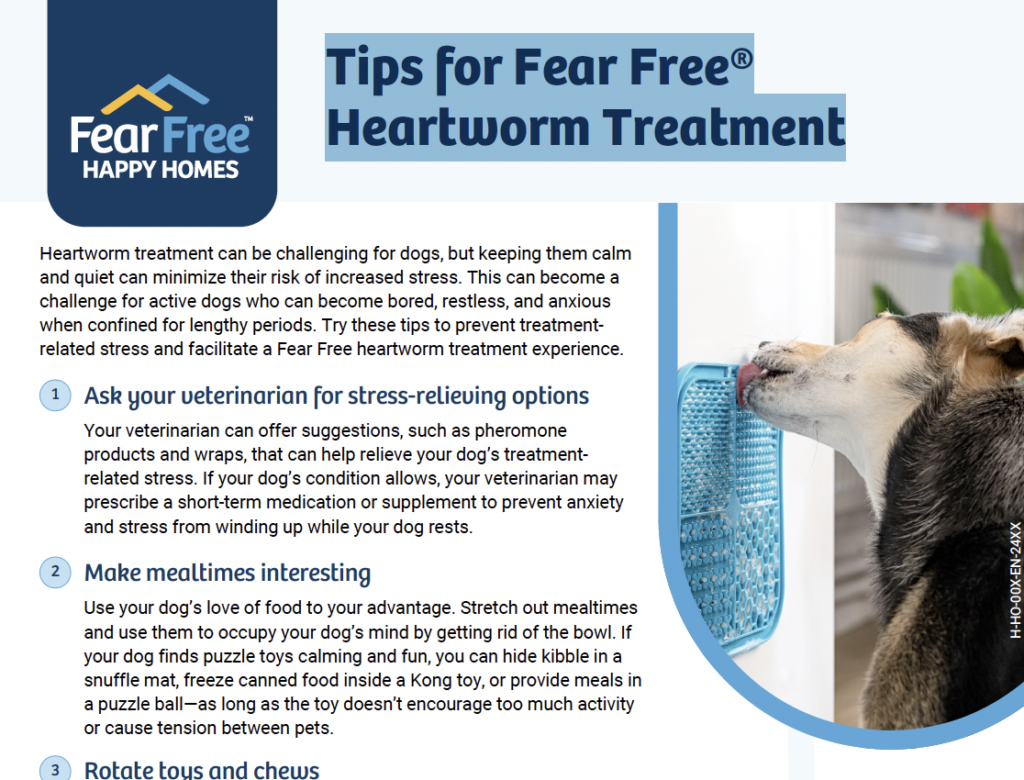
Heartworm treatment can be challenging for dogs, but keeping them calm and quiet can minimize their risk of increased stress. Try these tips to prevent treatment-related stress and facilitate a Fear Free heartworm treatment experience. Brought to you by our friends at Elanco.
